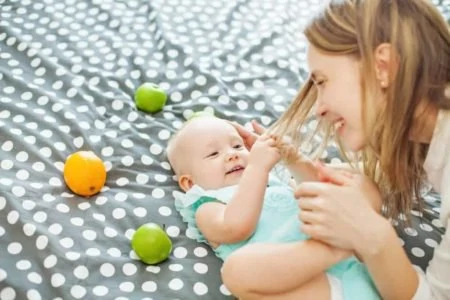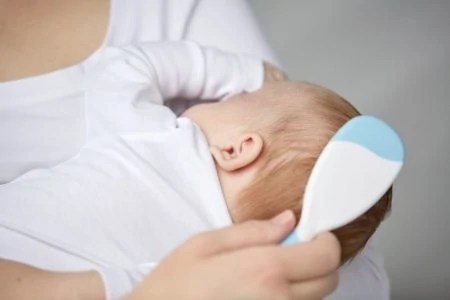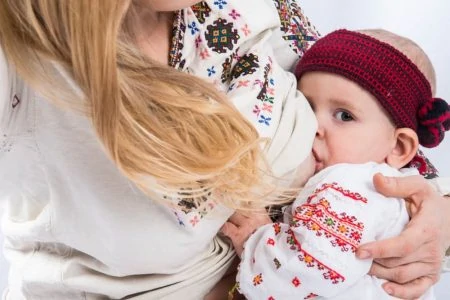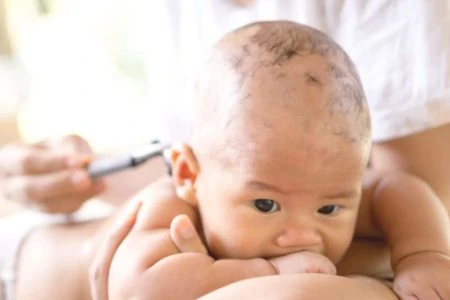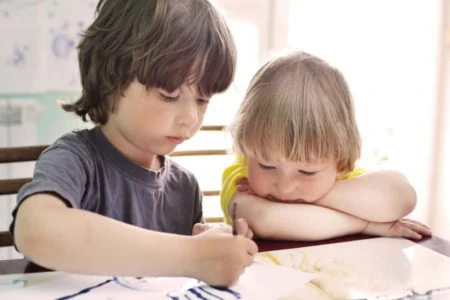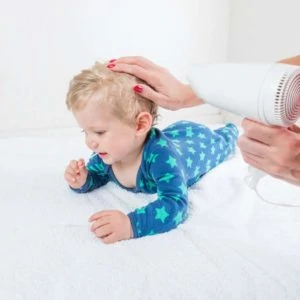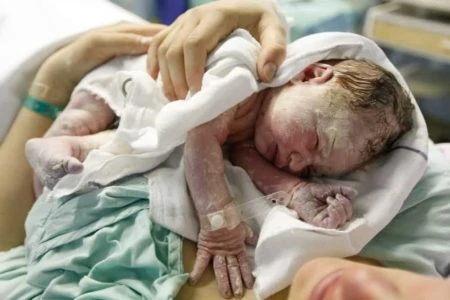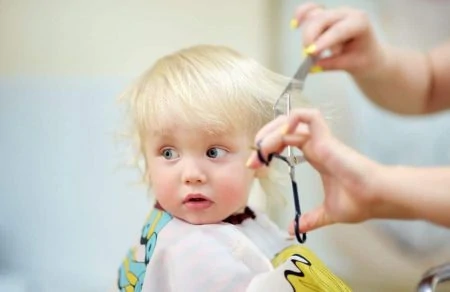Is your baby yanking on their hair, or perhaps twisting yours until it hurts? It can be alarming to watch your little one pulling out their own hair, and it is certainly frustrating when they decide to pull someone else’s.
Babies and toddlers are strange little people; they do plenty of things that leave us scratching our heads. While hair pulling is often a normal phase, it can sometimes signal an underlying issue that needs attention.
Most of us moms have dealt with this at some stage. It doesn’t mean you are doing a bad job.
However, you do need to understand why it happens so you can react the right way. Let’s dig into the reasons behind the behavior and how to stop it gently.
Key Takeaways
- Hair pulling in babies is often a sign of curiosity, fatigue, or a self-soothing mechanism.
- “Baby trich” is a temporary form of Trichotillomania that usually resolves on its own before age four.
- Pica is a serious condition where children eat non-food items like hair; this requires medical attention.
- When toddlers pull others’ hair, it is usually due to frustration or a lack of verbal skills.
Why Is My Baby/Toddler Pulling Their Own Hair?
As a veteran mom, I’ve seen my fair share of odd behaviors. My little ones have pulled, smelled, and tasted things I’d rather not mention. When it comes to your child pulling out their own hair, there are usually four main culprits.
1. Curiosity
Hair pulling is often something babies do simply because they can. The world is a sensory playground for them, and discovering they can yank on that fuzzy stuff on their head is an educational experience. They love to explore cause and effect.
Just because your baby tugs their hair doesn’t necessarily mean something is wrong. However, if you feel worried, observe their behavior for a week or two and mention it to your pediatrician.
If you notice the pulling is hurting them or leaving bald patches, try gentle redirection. Give them a tactile toy they love, or move their hand to another activity.
Research shows that babies’ interest in hair pulling often decreases with simple distraction techniques (1).
2. Self-Soothing Mechanism
Sometimes, babies and toddlers use hair pulling to calm themselves down. Some babies fall asleep easily when they stroke their heads or rub their noses; this is a similar habit. Others find it soothing to twist their mom’s hair around their fingers while cuddling.
You may notice that hair pulling generally occurs during sedentary moments:
- During breastfeeding or bottle feeding.
- When your little one is feeling tired or ready for a nap.
- When they are upset or overstimulated.
Babies who do this typically grow out of the habit as they age and find other ways to self-soothe.
3. Trichotillomania or “Baby Trich”
Trichotillomania (TTM) is a disorder where people feel an intense urge to pull out hair from their bodies. It typically results in noticeable bald patches (2).
While the disorder generally starts between ages nine and 13, it can occur in children as young as 18 months.
When this condition appears in children under the age of four, doctors often refer to it as “baby trich.” Fortunately, when this disorder affects toddlers, it usually resolves quickly on its own.
Adults suffering from TTM usually do it intentionally, but young children often don’t realize what they are doing. They likely won’t even remember it later in life.
Trichotillomania is different from the “bald patches” that form on the back of the head from an infant lying on their back. These bald patches occur because the back of the head rubs against flat surfaces during sleep, diaper changes, playmat time, etc. In clinical practice, I find that this hair begins to regrow by 7 to 8 months old when the infant spends more time in an upright position (3).
Editor's Note:
Dr. Leah Alexander, MD, FAAPSymptoms of Baby Trich
Usually, sufferers show both emotional and physical symptoms. However, mental and emotional signs are tricky to spot in toddlers since they lack the vocabulary to explain their feelings. Still, there are physical cues you can watch for.
Your toddler might exhibit the following behaviors:
- Constantly tugging, twisting, or twirling their hair.
- Pulling hair repeatedly in one specific spot, creating a bald patch on the scalp, eyelashes, or brows.
- Showing a sense of tension before pulling, followed by relief after doing it.
Why Does It Occur?
Doctors are still unsure about the exact cause, though some studies suggest triggers could include a lack of stimulation, stress, or even parental aggression (4).
Unfortunately, although this disorder is somewhat common, there is limited information on it. It is often misdiagnosed as Obsessive-Compulsive Disorder (OCD) and treated incorrectly (5).
It is hard to watch your little one pull out their hair, but your best bet is redirection. If your child is old enough to understand, calmly ask them to stop. Avoid making a huge scene, as this often causes unnecessary stress for both of you.
If you feel your little one does it more when you ask them to stop, try ignoring it. Scream internally if you have to, but stay cool on the outside. Sometimes, they do it just to push your buttons.
If you suspect your child has TTM, contact a professional for an evaluation.
Treatment Options
Physicians primarily treat this disorder with Cognitive Behavioral Therapy (CBT). This treatment helps your child become aware of their actions (6).
The goal of CBT is to teach your child to recognize the emotions and triggers behind the pulling. Depending on their age, this might involve wearing bracelets or carrying a “fidget” toy as a reminder.
Once your little one understands the problem, you can move to reversal therapy.
Your doctor might recommend placing bandages on your toddler’s fingertips to make grasping hair difficult. Another option is to tie their hair back or cover it with a hat.
For older kids who crave the sensory input, doctors recommend providing items with a similar texture, like a textured pencil topper, a feather, or a satin ribbon.
4. Pica (Eating Hair)
You probably heard of Pica during pregnancy; it’s the craving for non-food items like dirt or ice. However, it is also seen in young children.
A baby may try eating their hair once or twice out of curiosity. However, Pica is diagnosed when a child persistently eats non-food items for at least one month (7).
This condition is serious. The unnatural substances your baby swallows can contain toxins or cause blockages. Eating hair specifically can lead to “Rapunzel Syndrome,” causing dangerous intestinal obstructions.
Depending on their age, a child might eat paint, plaster, fabric, or hair. Older kids may opt for sand, leaves, pebbles, or even insects.
Signs of Pica
Doctors take Pica seriously due to the risk of poisoning or blockage. They will examine your child thoroughly if you report these symptoms.
The main clue is observing your child eating non-food items (like hair) persistently for more than a month, despite your efforts to stop them.
Why Does Pica Occur?
Experts are not entirely sure what causes Pica, but several circumstances contribute to its development.
Common triggers include:
- Nutritional deficiencies: A lack of iron or zinc can cause cravings for non-food items.
- Malnutrition: While less common in developed nations, hunger can drive children to eat soil or clay.
- Developmental issues: Conditions like autism or developmental disabilities can increase the risk.
- Mental health disorders: It is sometimes linked to OCD or schizophrenia.
Treatment for Pica
Treatment aims to prevent the behavior first. This might include using mittens, stuffed animals, or blankets to keep their hands busy.
Next, ensure your little one is getting proper nutrition. Your doctor will likely run blood tests to check mineral levels. If they find a deficiency, they will advise dietary changes or supplements.
Fortunately, most young children outgrow Pica with time and proper management.
From what I see in practice, iron deficiency anemia is the most common reason an infant or child exhibits pica. It could be associated with a high serum lead level. My routine initial workup is a complete blood count (CBC) and a lead test for children under the age of 5.
Editor's Note:
Dr. Leah Alexander, MD, FAAPHelp! My Toddler Is Pulling Other People’s Hair
As a mom who has had to apologize countless times for a misbehaving toddler, I relate to this deeply. It is embarrassing to face the judgmental eyes of other parents while their child screams.
So, what can you do about it?
1. For Babies (6, 12 Months)
Babies often pull hair to experiment and explore, much like they do with their own hair.
Between 6 and 12 months, pulling hair helps babies understand cause and effect. They might yank your hair while nursing just to see what you do. Will you laugh? Will you yelp? Will you get mad?
Remember, babies learn everything from us, including how to react to physical boundaries.
How Should You React?
Since your baby is testing cause and effect, the best reaction is a calm, boring one.
If you laugh, it becomes a game. If you scream, the big reaction fascinates them.
Instead, try this:
- Say “No”: Use a firm but calm voice.
- Remove the hand: Gently uncurl their fingers from your hair.
- Break contact: Set them down or turn away for a moment to show that hair pulling ends the fun interaction.
You are teaching them that hair pulling results in a loss of attention, which is the opposite of what they want. Be consistent, and they will eventually catch on.
2. For Toddlers
Toddlers are more aware that hair pulling hurts. However, they often use it to express anger, frustration, or a lack of control (8).
Toddlers, especially those who aren’t talking yet, find it hard to express big feelings. If they feel wronged, biting, pinching, or hair pulling becomes their communication tool.
They might also be copying behavior they saw at daycare or on a screen.
What Can You Do?
First, identify the trigger. Is your toddler hungry, tired, or frustrated? Are they doing it for attention?
Next, monitor your own reaction. Are you staying calm, or are you escalating the situation?
Here is a step-by-step plan:
- Stay calm: Fake it if you have to. Your calm demeanor teaches them emotional regulation.
- Focus on the victim: If they pull a playmate’s hair, turn your attention to the injured child first. This denies the aggressor the attention they sought.
- Immediate consequence: If the behavior continues, implement a calm consequence, like a brief time-out or removal from the situation.
Help your child use words by saying things like, “I see you are mad, but we do not pull hair.” Consistency is your best friend here.
Baby Hair Pulling FAQs
In Conclusion
Babies and toddlers who pull their own hair (or yours!) are usually just exploring their boundaries and senses. While it can be annoying or worrying, it is rarely a sign of a serious long-term disorder.
Keep an eye on the frequency and triggers. If it seems obsessive or results in bald spots, chat with your doctor. Otherwise, stay consistent with your redirection, save your own scalp, and remember: this too shall pass.
